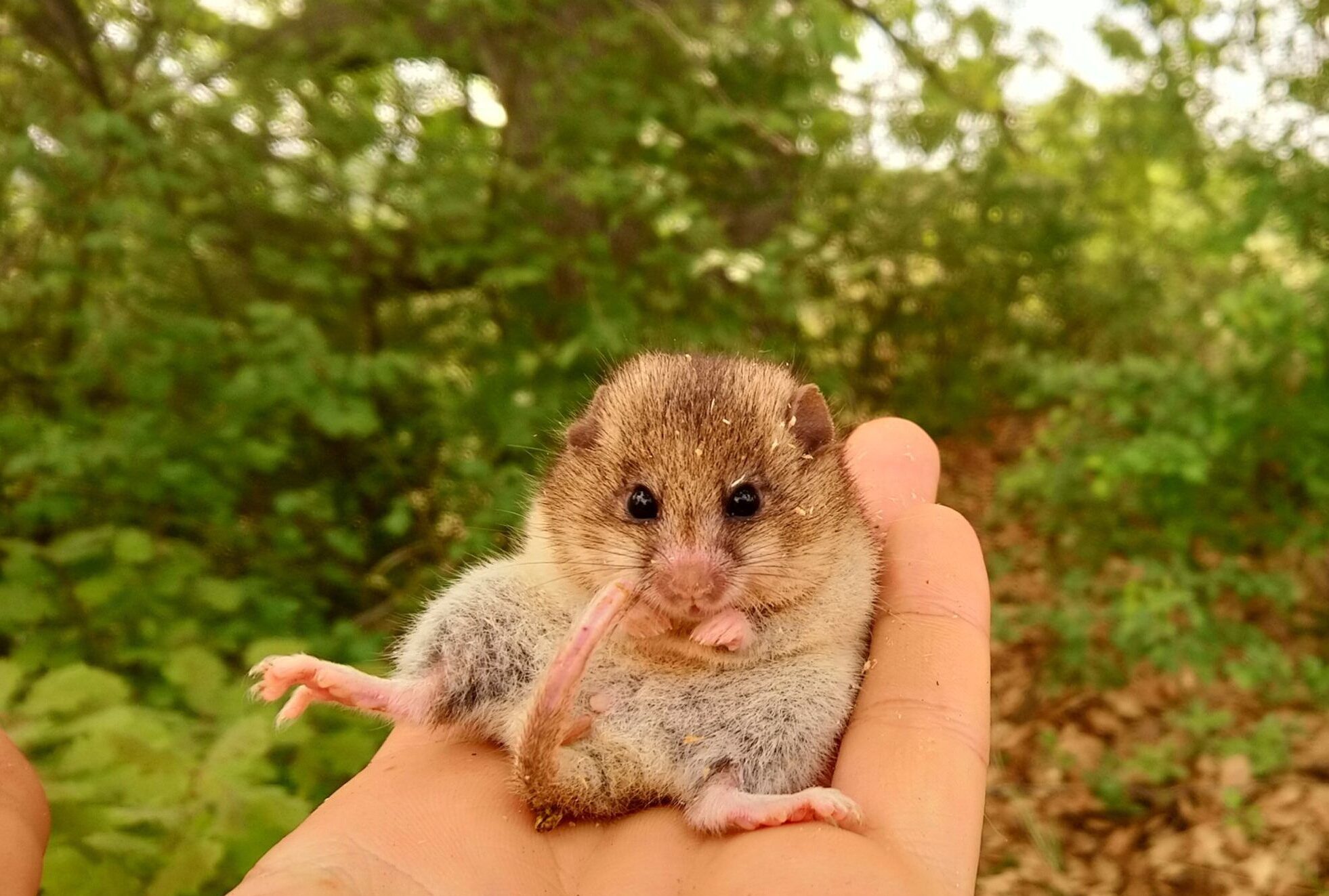Roach’s mouse-tailed dormice in Bulgaria

Roach’s mouse-tailed dormouse are one of the least-known and rarest rodents in Europe. They’re only found in the European part of Turkey, southeast Bulgaria and Greece, and there are a few records in western Turkey, along the seashore. Despite many searches over the past few years, only a handful of individuals have been found at three sites in Bulgaria. Nedko Nedyalkov and his team decided to find out more about this elusive species by putting out nest boxes, live traps and wildlife cameras in southeastern Bulgaria. The nest boxes were particularly successful and frequently used by dormice.
What’s on the menu for Roach’s mouse-tailed dormouse?
The nest boxes weren’t only used by the dormice to sleep and breed, but also as toilets. To discover more about dormouse eating habits, and therefore which habitat features are essential for their survival, Nedko and his team carefully collected samples of their poo. Only the indigestible parts leave the body, making precise identification difficult. In the past, scientists used microscopes and reference collections of insects, vegetables and fruits to identify the remnants – tedious work. Now, DNA metabarcoding, also known as environmental DNA analysis, is quicker and more precise.
The eDNA analysis reveals diet variation and differences in available food resources between locations, and also the effect of season and year. When the individuals that produced the poo are known, it’s also possible to find out their life-stage and sex-specific food preferences. With this information, Nedko and his team gain greater insight into the factors that best suit the dormouse, vital information in setting up the national species protection plan and also in the search for unknown populations.
We know that Roach’s mouse-tailed dormice live in open and semi-open habitats with old trees and little agricultural activity, a habitat still very common in south-eastern Europe. But this may change. Younger generations in Bulgaria are moving to cities and the Black Sea coast, leaving their family’s farmlands to nature or big investors. Either way, the landscape will change to intensive agricultural land or to enclosed vegetation of shrubs and forests. This could well be the main threat to the long-term survival of Roach’s mouse-tailed dormice in south-eastern Europe. However, it doesn’t explain their absence in their former range where, according to Nedko, their preferred semi-open habitat is still present.
Their shrinking distribution may be a product of decreasing food availability, particularly before hibernation or during the breeding season when the dormice need to fatten up. For a species with a long, six-month hibernation period, and only one litter per breeding season, acquiring enough food at the right moment is crucial for their survival and reproductive success. Changes in food availability may be caused by habitat or climate change, or both.
Food and shelter are crucial to any animal’s survival and population growth. Nedko is certain that habitat changes will affect the survival of Roach’s mouse-tailed dormouse in the future, if they’re not already. With the diet analysis, we have a better understanding of the relationship between the current habitat and their key food and shelter requirements. With this knowledge, Nedko is prescribing habitat management activities to help save Roach’s mouse-tailed dormice in Europe.
We want to give mouse-tailed dormice a better chance of survival; with your help we can make a difference.
Header image credit Habitat Foundation

